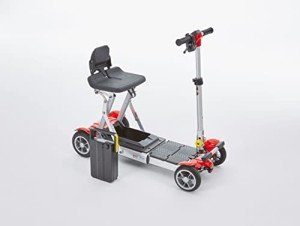5 Mobility Aids Projects That Work For Any Budget
Understanding Mobility Aids: Enhancing Independence and Quality of Life
As society continues to age and individuals progressively look for ways to preserve self-reliance, the need for mobility aids has never ever been more pertinent. Mobility aids, which encompass a variety of devices created to assist individuals with strolling or walking around, play a crucial function in promoting mobility, boosting security, and enhancing total lifestyle. This blog post will check out the different types of mobility aids, their benefits, factors to consider for choice, and address some frequently asked questions.
Kinds Of Mobility Aids
Different mobility aids are available, each created to address specific needs. The following table sums up some of the most common kinds of mobility aids and their features.
Kind Of Mobility Aid
Description
Best Suited For
Key Features
Canes
A portable stick offering support and balance.
People who need very little help.
Light-weight, portable, adjustable height.
Walkers
Four-legged frames providing stability.
Those needing considerable support while strolling.
Foldable, some with wheels, included security features.
Rollators
Wheeled walkers with a seat for resting.
People needing mobility with the alternative to rest.
Brakes, baskets for personal items, adjustable height.
Wheelchairs
Chairs with wheels for individuals with restricted mobility.
Those not able to walk or needing substantial assistance.
Handbook or powered alternatives, adjustable seating.
Scooters
Motorized devices for larger ranges.
People with restricted endurance however needing independence.
Various sizes and designs, often portable.
Crutches
Assistance devices put under the arms or forearms.
People recovering from lower limb injuries.
Adjustable, lightweight, needs upper body strength.
Stairlifts
Mechanical devices for moving in between floorings.
Users facing challenges in multi-level homes.
Customizable for various staircases, automated.
Benefits of Mobility Aids
Mobility aids provide a variety of advantages that can substantially enhance the lives of people facing mobility difficulties. Some significant advantages include:
Increased Independence: Mobility aids empower people to move freely without counting on others for help, therefore improving their self-confidence and self-confidence.
Improved Safety: Using mobility aids can decrease the risk of falls and injuries, specifically for older adults or those with balance issues.
Enhanced Quality of Life: By assisting in mobility, people can participate in social activities, go to occasions, and take pleasure in life more fully, adding to much better psychological and mental health.
Rehabilitation Support: After surgery or injury, mobility aids provide essential support and stability, helping in recovery and rehab procedures.
Accessibility: Many mobility aids are designed to be utilized both inside your home and outdoors, guaranteeing that individuals can navigate different environments with ease.
Elements to Consider When Choosing Mobility Aids
Picking the suitable mobility aid needs mindful factor to consider of numerous aspects, consisting of:
Factor
Considerations
User's Needs
Evaluate the level of mobility needed; consider whether the user requires short-term or long-lasting assistance.
Physical Limitations
Examine the user's strength, balance, and coordination to determine the very best type of aid.
Setting
Consider the primary environments where the help will be utilized, such as home, outdoors, or particular surfaces.
Weight and Portability
Make sure that the chosen device is workable regarding transportability and storage, especially for outside use.
Budget
Mobility aids come in a series of prices; consider insurance protection and available financing options.
Adjustability
Select aids that can be adjusted for height and comfort to accommodate development or altering needs.
Often Asked Questions About Mobility Aids
1. How do I understand if I require a mobility help?
Numerous elements can signal the need for a mobility aid, such as problem strolling or balancing, fatigue while standing, or a current surgical treatment affecting mobility. Consulting with Dominick Bousley can offer assistance tailored to individual needs.
2. What types of mobility aids are covered by insurance?
Coverage differs in between insurers, however the majority of supply choices for durable medical devices, which normally includes wheelchairs, walkers, and some types of walking sticks. Check with your insurance company for specific protection information.
3. Can mobility aids be used outdoors?
Yes, numerous modern mobility aids are designed for outdoor use. Rollators, scooters, and some walkers are equipped with functions for stability and ease of usage on different surface.
4. How do I preserve my mobility aid?
Regular upkeep involves inspecting for any wear and tear, ensuring that parts such as wheels, brakes, and frames are functioning properly, and cleaning up the devices as required. Following the producer's standards is essential for safety.
5. Is there a risk of ending up being reliant on mobility aids?
While some users may end up being reliant on mobility aids, they are designed to promote independence and mobility. Gradually using a mobility help can boost confidence and aid retain physical strength and coordination.
Mobility aids are important tools that empower individuals to overcome physical difficulties, promoting independence and boosting quality of life. By understanding the numerous types of mobility aids offered, their advantages, and crucial factors for consideration, households and caregivers can make informed decisions that best meet the requirements of their liked ones. With the right assistance, those with mobility challenges can lead satisfying and active lives, complimentary to explore the world around them.
